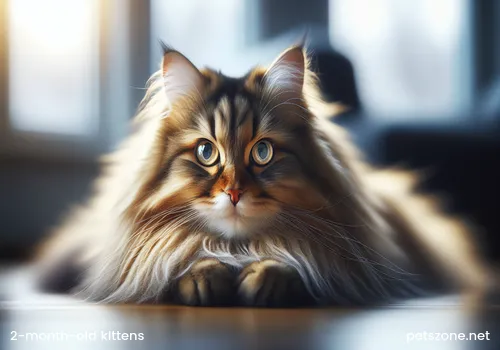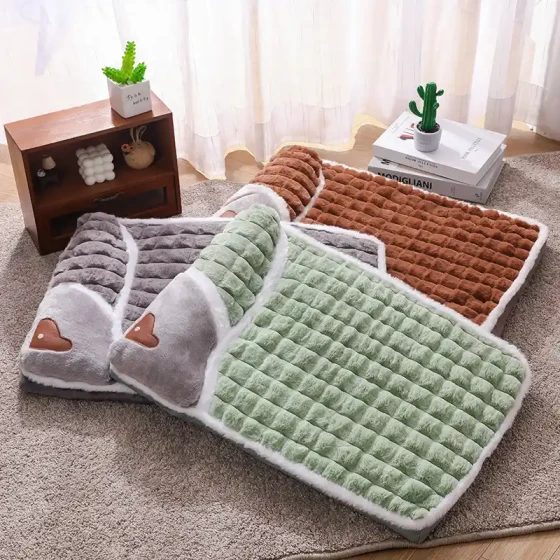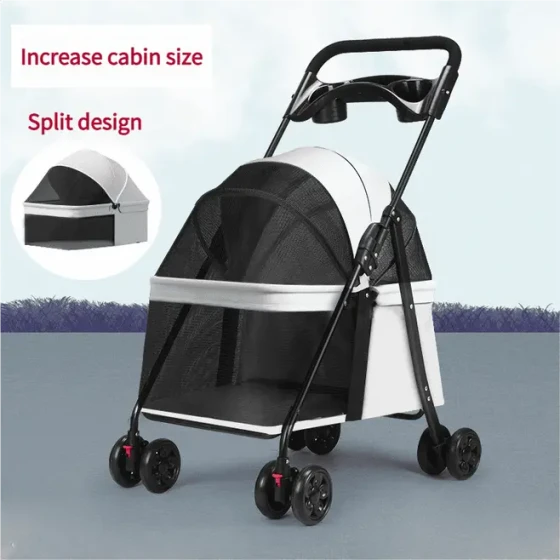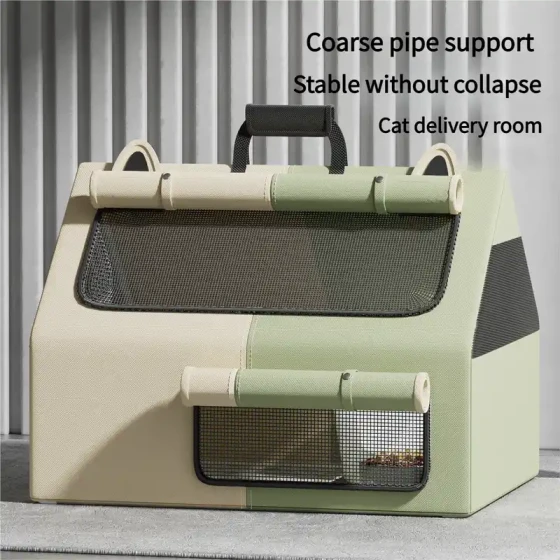Can 2-Month-Old Kittens Eat Cat Food_Kitten Feeding Guide and Precautions
Two-month-old kittens can generally start eating cat food specifically designed for kittens. This stage is a crucial period for them to gradually transition from fully relying on mother's milk or milk replacers to solid food. Choosing the right kitten food and following scientific feeding methods is vital for the kitten's healthy growth.

Can 2-month-old kittens eat cat food? The answer is yes!
When kittens reach 2 months old, their baby teeth are basically fully grown, and their digestive systems gradually mature, enabling them to digest solid food. At this time, cat food specially formulated for kittens (kitten food) becomes their main daily diet choice. This type of cat food is very different from adult cat food and is tailored to the special nutritional needs of kittens growing rapidly. In the first few months after birth, kittens develop remarkably fast and need more protein, fat, calcium, phosphorus, and DHA, among other key nutrients, to support comprehensive development of bones, muscles, brain, and immune systems. Therefore, feeding 2-month-old kittens with kitten food instead of random human foods or adult cat food is the cornerstone to ensure their healthy growth.
Choosing kitten food: wise selection for your little master
With a dazzling array of cat food brands on the market, how to pick the most suitable food for 2-month-old kittens? This is truly a "happy dilemma," but there are guidelines to follow.
- Identify "kitten-specific": This is the primary principle. Kitten food usually clearly labels "kitten food," "Kitten Formula," or "suitable for 0-12 month kittens" on the packaging. The kibble size is moderate and easier for kittens to swallow and digest.
- Pay attention to nutritional ingredients:
- Protein: Kitten food generally has a higher protein content, usually between 30%-40%. High-quality animal proteins (such as chicken, fish) should be listed at the top of the ingredient list.
- Fat: Provides energy needed for kitten growth, with contents generally between 15%-25%.
- Calcium to phosphorus ratio: An appropriate calcium-to-phosphorus ratio is critical for kitten bone development, generally recommended between 1.1:1 and 1.4:1.
- DHA: Helps brain and vision development in kittens.
- Others: Vitamins, minerals, probiotics, etc., are also indispensable.
- Dry food, wet food, or mixed feeding?
- Dry food: Convenient to store and feed, helps clean teeth. For 2-month-old kittens, dry cat food can initially be softened with warm water or pet-specific goat milk powder before feeding. Once the kitten adapts, soaking time can be gradually reduced. A small bag of high-quality kitten dry food, usually costing tens to over one hundred RMB, can feed the kitten for quite a while and is cost-effective.
- Wet food (cans/soft packs): High moisture content, excellent palatability, helps kittens supplement water. Especially beneficial for newly weaned kittens or those not liking to drink water. But wet food must be consumed quickly after opening and is relatively more expensive.
- Mixed feeding: Many cat-owning families choose a combination of dry and wet food, which meets the kitten's water needs while taking care of dental health and cost effectiveness. It's like opening a “buffet” for the kitten, with both staple food and treats, which kittens often love “cannot stop.”
- Avoid "trap" ingredients: Try to select cat food free of artificial colors, flavors, preservatives, and large amounts of grain fillers (like corn, wheat, soy). These ingredients may cause digestive issues or allergies in kittens.
Feeding method and frequency: small meals multiple times a day, helping kittens grow healthily
Two-month-old kittens are in a vigorous growth period with a fast metabolism and small stomach capacity, so "small meals multiple times a day" is the best feeding strategy for them.
- Feeding frequency: It is recommended to feed 3-4 times daily. You can divide the total daily feeding amount into several portions, feeding every 3-4 hours. For example, at 7 AM, 12 PM, 5 PM, and 10 PM. This ensures the kitten continuously receives energy and nutrients.
- Feeding amount: Be sure to refer to the recommended feeding amount on the cat food packaging. These recommendations are based on the kitten's weight and age. But remember, this is just a reference; actual feeding amounts need adjustment according to the kitten's condition (such as activity level, body size, growth rate). You can judge if the kitten is overfed or underfed by observing its body shape (ribs can be felt but not protruding; waist has a curve).
- Food preparation:
- Soaking food: For kittens just starting to eat dry food, use warm water at 30-40 degrees Celsius (comfortable to the hand, neither hot nor cold, like infant formula temperature) to soften the cat food, wait 10-15 minutes until the food fully absorbs water, swells, and softens before feeding. The ratio of water to cat food is about 1:1 or 1.5:1.
- Ensure freshness: Each feeding should use fresh food. Unfinished wet food should be cleaned up or refrigerated promptly (reheat to room temperature before the next feeding). Dry food exposed to air for a long time loses flavor and deteriorates, so put it away after feeding.
- Provide ample drinking water: Whether feeding dry or wet food, kittens need fresh and clean drinking water anytime. Especially during hot summers or when kittens are very active, their demand for water increases. Keep the water bowl clean and change water daily.
Feeding precautions: details determine health, adding points for the kitten's future
Raising a kitten is like caring for a "troublesome little demon," requiring great patience and care.
- Keep forbidden foods in mind: Many human foods are deadly toxins for cats. Chocolate, onions, garlic, grapes, raisins, alcohol, caffeine, raw meat, raw eggs, bones, milk (adult cats are usually lactose intolerant), etc., must never be fed to kittens. One careless act could send the kitten "to the hospital on IV," which is not worth the risk.
- Gradual food change to avoid digestive discomfort: If you need to change the brand or flavor of cat food, avoid "cold turkey." Use the "seven-day food transition method": gradually increase the ratio of new food and decrease old food over 7-10 days to let the kitten's digestive system adapt, avoiding vomiting or diarrhea caused by sudden food changes.
- Regular observation: Observe the kitten's mental state, appetite, water intake, and excretion (shape, color, smell) daily. If symptoms like lethargy, poor appetite, persistent vomiting or diarrhea, coughing, sneezing, etc., appear, contact the veterinarian promptly.
- Moderate exercise and play: Besides diet, moderate exercise and play are equally important for kittens’ healthy growth. This helps digestion, enhances physical fitness, promotes social skills development, and prevents kittens from becoming depressed due to inactivity.
- Regular deworming and vaccinations: Do not forget routine internal and external deworming and vaccinations during feeding. These are important measures to protect kittens from parasites and infectious diseases.
Special situation handling: when kittens are "picky eaters" or unwell
Kittens sometimes have "little moods," such as suddenly disliking food or showing some health problems.
- Poor appetite: If a kitten suddenly loses appetite, first rule out illness. Check for other symptoms like vomiting, diarrhea, poor spirit, etc. If disease is excluded, it may be environmental changes, stress reaction, or boredom with the food. Try changing the flavor or texture of food (dry and wet combo), or add pet probiotics to improve intestinal health.
- Picky eating: Some kittens are natural "foodies" and more selective. In this case, don’t indulge them excessively or frequently change their food, or it may make their pickiness worse. You can remove the food if not eaten within a set time, and serve the next meal later. But ensure the kitten is healthy with no discomfort.
- Vomiting and diarrhea: Kittens’ digestive systems are fragile; vomiting or diarrhea may be caused by food intolerance, parasite infection, viral infection, etc. Once it happens, immediately stop feeding and drinking for a period (follow vet advice), and promptly take the kitten to a pet hospital for professional help.
Frequently Asked Questions
- Q1: Can 2-month-old kittens drink milk?
A1: It is not recommended to give 2-month-old kittens human milk. Most cats (including kittens) lack the enzyme to digest lactose, and drinking milk easily causes lactose intolerance, resulting in diarrhea, vomiting, and other digestive problems. If fluid supplementation is needed, choose pet-specific goat milk powder. - Q2: When can kittens eat only dry cat food?
A2: Around 3-4 months old, kittens’ baby teeth become stronger and their digestion matures, usually allowing gradual transition to only dry cat food. Before then, it is recommended to feed mixed dry and wet food or soften dry food when feeding. - Q3: What to do if kittens don’t want to eat?
A3: First rule out illness if kittens lose appetite. Also, try softening dry food with warm water or pet goat milk powder to increase palatability; try different tastes of wet kitten food; keep the feeding bowl clean and provide a quiet eating environment. If the refusal continues, consult a veterinarian. - Q4: How much water do kittens need daily?
A4: Daily water intake depends on multiple factors such as weight, activity level, diet type (dry or wet food), and environmental temperature. Generally, about 50-60 ml per kilogram of body weight daily is needed. Kittens eating mostly dry food require more water. Ensure fresh and clean water is always available.
Summary
Feeding 2-month-old kittens is a task full of fun and challenges, but as long as you master the correct knowledge and methods, you can help them grow healthily and happily. From choosing nutritionally balanced kitten food to following the "small meals multiple times a day" feeding rule, then paying attention to daily details and promptly handling emergencies, every step is full of the cat owner's love and responsibility. Remember, patience and meticulousness are the best "seasonings for cat food." May you and your little kitty embark together on a wonderful life journey!

-560x560.webp)

